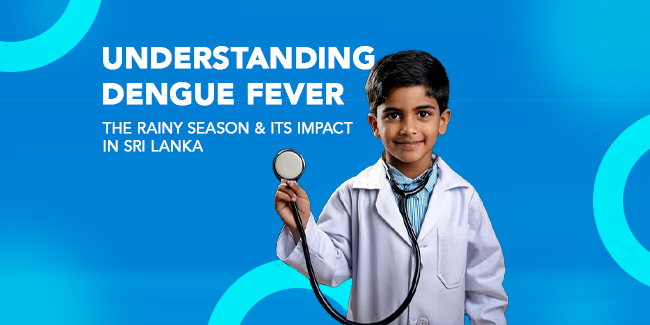Understanding Dengue Fever: The Rainy Season and Its Impact in Sri Lanka
Dengue fever, a mosquito-borne viral infection, poses a significant public health challenge in tropical and subtropical regions, including Sri Lanka. With the onset of the rainy season, the risk of dengue outbreaks escalates, making it crucial for communities to understand the connection between rainfall and the proliferation of this disease.
The Dengue Virus and Its Transmission
Dengue is caused by the dengue virus, which has four serotypes (DEN-1, DEN-2, DEN-3, DEN-4). The primary vector for the transmission of dengue is the Aedes aegypti mosquito, which thrives in urban environments. According to the World Health Organization (WHO), symptoms of dengue can range from mild fever to severe manifestations such as dengue hemorrhagic fever and dengue shock syndrome.
The Role of Rainfall
In Sri Lanka, the rainy season typically runs from May to September, with the northeastern monsoon occurring from October to January. This period creates ideal breeding conditions for Aedes mosquitoes. Standing water from rainfall serves as breeding sites, as these mosquitoes lay their eggs in stagnant water found in containers, discarded tires, and even in puddles.
Statistics and Trends
The Sri Lankan Ministry of Health reported significant spikes in dengue cases during and after the rainy season. For example, during the 2023 monsoon season, the country experienced a surge in cases, with reports indicating over 60,000 dengue cases by September. This figure represents a substantial increase compared to the same period in previous years, highlighting the need for public awareness and preventive measures.
Environmental Factors and Urbanization
Urbanization plays a crucial role in the spread of dengue in Sri Lanka. Rapid development has led to inadequate waste management and increased water accumulation in urban areas. A study published in the International Journal of Environmental Research and Public Health indicated that urban settings with poor drainage systems are particularly susceptible to dengue outbreaks.
Preventive Measures
Community Awareness
Raising community awareness is vital in controlling dengue. Educational campaigns by health authorities focus on the importance of eliminating breeding sites. Residents are encouraged to regularly empty containers that can collect water, cover water storage tanks, and ensure proper waste disposal.
Government Initiatives
The Sri Lankan government, in collaboration with international organizations, has implemented several initiatives to combat dengue. These include:
- Surveillance Programs : Continuous monitoring of mosquito populations and dengue cases helps in early detection of outbreaks.
- Fogging Operations : In high-risk areas, fogging is conducted to kill adult mosquitoes, although its effectiveness is limited and should be part of a comprehensive strategy.
- Community Engagement : Programs that involve community participation, such as clean-up campaigns, have shown promise in reducing mosquito breeding sites.
Conclusion
As the rainy season in Sri Lanka continues, the threat of dengue fever remains a pressing public health issue. By understanding the link between rainfall and mosquito breeding, and by implementing effective preventive measures, communities can mitigate the risks associated with dengue. Collective efforts, combined with awareness and education, are essential to curb the spread of this disease and protect public health.













